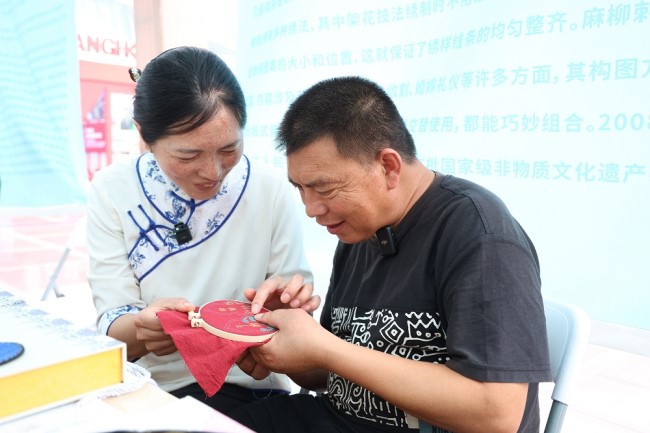Intangible cultural heritage preservers exchange experience in Chongqing

Zhang Juhua (L), the inheritor of Maliu embroidery from Guangyuan, Sichuan province, demonstrates embroidery skills to Zheng Jincheng (R), the inheritor of gourd pyrography from Mianyang, Sichuan. [Photo provided to cngy.gov.cn]
Next, Zheng picked up an embroidery needle to experience a round of intricate stitching under Zhang's guidance.
"The stitches are so dense; it's hard to find the right spot," Zheng remarked.
"Place the needle close to your finger," Zhang said, patiently demonstrating the technique.
Maliu embroidery is a folk art popular in Chaotian district of Guangyuan. It was added to China's national intangible cultural heritage list in 2008. Developed through long-term self-sufficient production, the works primarily consist of everyday items such as curtains, pillowcases, waistbands, hand towels and shoes. Artists draw on black, white, red and blue cotton floss and self-woven cloth to make their works.
Gourd pyrography emphasizes precision at the tip of the pen and the shape of the strokes. It incorporates Chinese painting techniques such as dotting, rubbing and line drawing, offering simple, elegant and enduring charm. The works made in Anzhou district of Mianyang is beloved by domestic and global customers, especially the notable works featuring twelve zodiac signs, lotus pictures and panda pictures.
